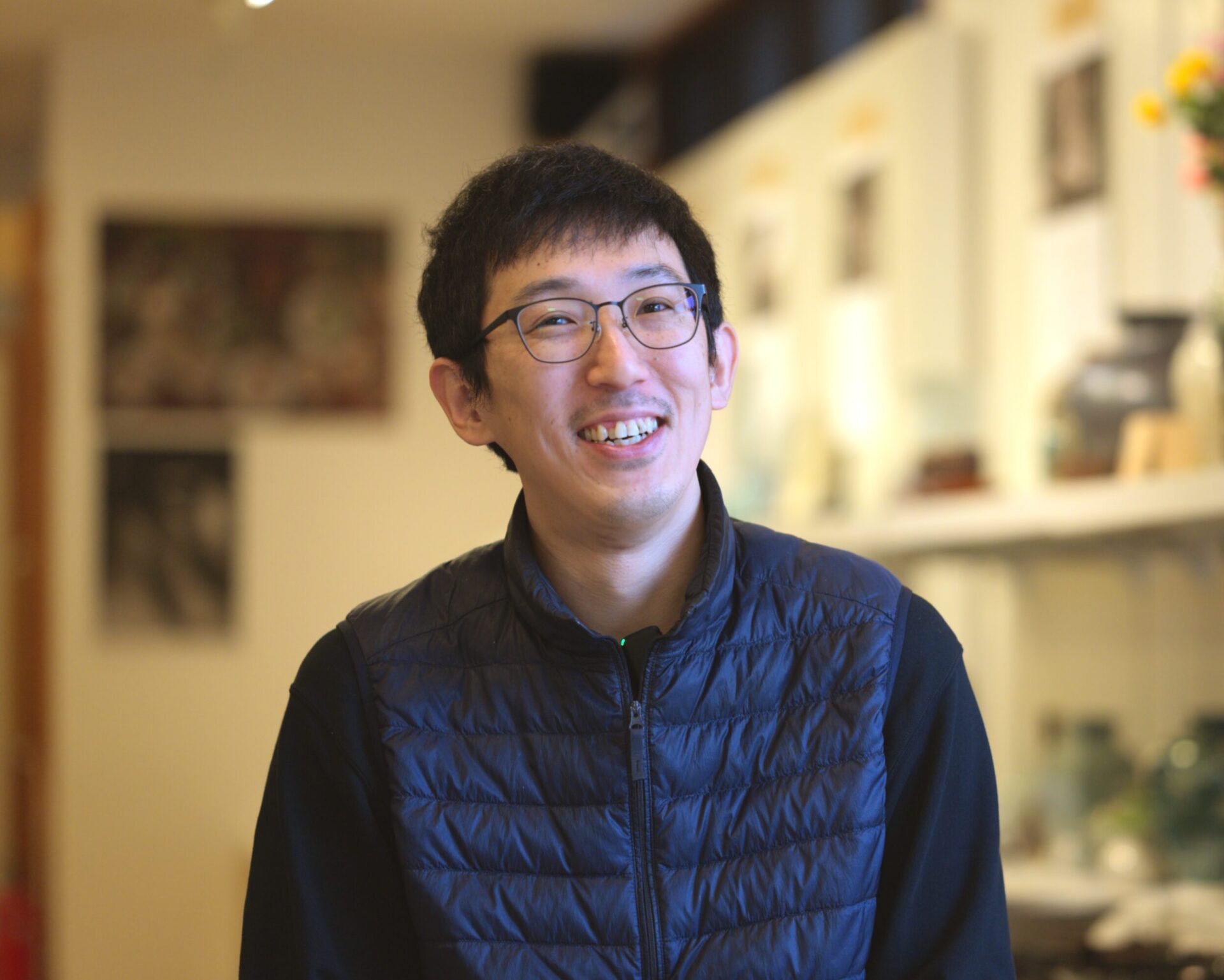
Crafting the Next 100 Years of Aizu-Hongo Ware — With Makers, Supporters, and Storytellers Working Together

松田 純一
Junichi Matsuda
Aizu [Fukushima]
Junichi Matsuda
Born in Tokyo. Currently serves as the secretariat of the Aizu-Hongo Ware Cooperative Association and is the representative of LLC JERK. He moved to the Aizu region at the age of five. Motivated by the desire to contribute to his hometown’s recovery following the Great East Japan Earthquake, he joined the Aizu-Hongo Ware Cooperative Association. In addition to promoting Aizu-Hongo ware, he is also committed to revitalizing the local community of Aizumisato Town.
Aizu-Hongo ware, with over 400 years of history, continues to thrive in Aizumisato Town, Fukushima Prefecture. With each kiln possessing unique characteristics and craftsmanship, the tradition has quietly flourished, nurtured by the deep-rooted yet reserved spirit of the Aizu people. Junichi Matsuda, who transitioned from a different industry, now dedicates himself to sharing the charm of this pottery. As someone with a fresh perspective, he recognizes both the beauty of the craft and the challenges faced by the region. We spoke to Matsuda about his vision of connecting people through pottery and his hopes for the future of Aizu-Hongo ware.
Drawn to Aizu-Hongo Ware in the Wake of the Earthquake
Aizumisato Town lies in the Aizu Basin, surrounded by fertile plains to the north and overlooked by the majestic Mount Bandai. Despite harsh summers and heavy snowfall in winter, the town’s natural beauty brings peace to visitors throughout the year.
The town is composed of three areas: Aizu-Takada, known for its historic temples and shrines; Niitsuru, renowned for grape cultivation; and Aizu-Hongo, home to the oldest kiln site in the Tohoku region and the birthplace of Aizu-Hongo ware.
Junichi Matsuda now works at the Aizu-Hongo Ware Cooperative Association. His journey began when his father opened a pension in Urabandai, near Mount Bandai, prompting a family move from Tokyo when he was five.
Although Aizu-Hongo and Urabandai are just an hour apart by car, Matsuda never imagined he had visited Aizu-Hongo before—until his memories were stirred.
“After I started working with Aizu-Hongo ware, I began to feel a strange sense of familiarity. When I asked my parents, they reminded me that we once joined a walk rally event in Aizu-Hongo shortly after moving from Tokyo. Even the rice bowl I used as a child turned out to be from Ryumon Kiln, one of the local potteries. I was surprised to realize I had a connection to this place all along.”
So how did Matsuda get involved with Aizu-Hongo ware?
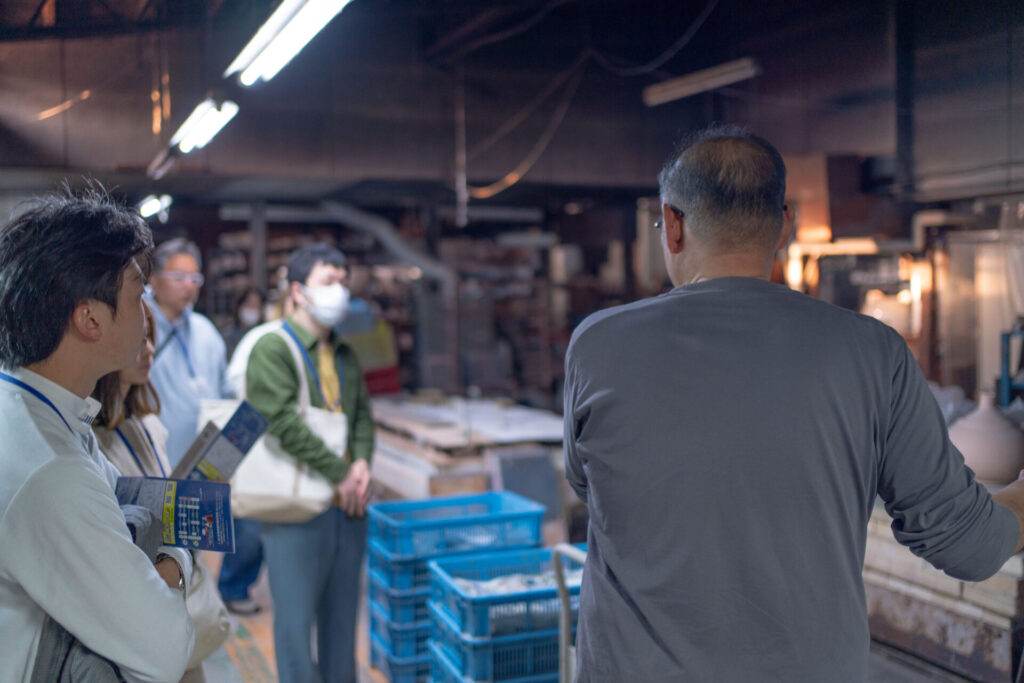
“After the 2011 earthquake, I wanted to help with local recovery efforts, so I joined Aizumisato’s PR caravan team. That’s when I began promoting local specialties, including Aizu-Hongo ware. When my time with the caravan ended, I was invited to work at the cooperative. I had no prior knowledge of pottery, but I knew this was a rare opportunity to be involved with a nationally designated traditional craft. It also felt like an exciting challenge—something a bit different from the norm.”
Matsuda smiles humbly, adding, “To be honest, I still don’t know that much about pottery.”
Even so, guided by fate or coincidence, he found his way to Aizu-Hongo ware. Yet he confesses there were times he questioned his role. What helped him find his place was the support of the people around him.
“Everyone at the cooperative and in the community was incredibly kind. They gave me the space to grow. I still feel grateful and want to give back.”
In 2020, driven by this desire, Matsuda founded his own company, LLC JERK, to further support the cooperative from the outside and contribute to the town’s overall revitalization.
Shifting the Focus: From Pottery Alone to the Whole Town
Aizu-Hongo ware traces its origins back to the Azuchi-Momoyama period over 400 years ago. It began when the local feudal lord invited potters from Harima (present-day Hyogo Prefecture) to produce roof tiles that could withstand the region’s harsh winters. Eventually, Aizu-Hongo became the official kiln of the Aizu domain, and its pottery gradually became a part of everyday life. One of its iconic items is the “Nishin-bachi,” a vessel used for preparing a traditional herring dish.
At its peak, the region had over 100 kilns. Yet outside of Tohoku, Aizu-Hongo ware remains relatively unknown. This may be due in part to the Aizu people’s reserved nature. As with many traditional crafts, the industry now faces a shortage of successors, and only 12 kilns remain.
Assigned to promote the craft, Matsuda noticed a unique strength: the compact area in which all the kilns—each with a distinct style—are clustered within a one-kilometer radius.
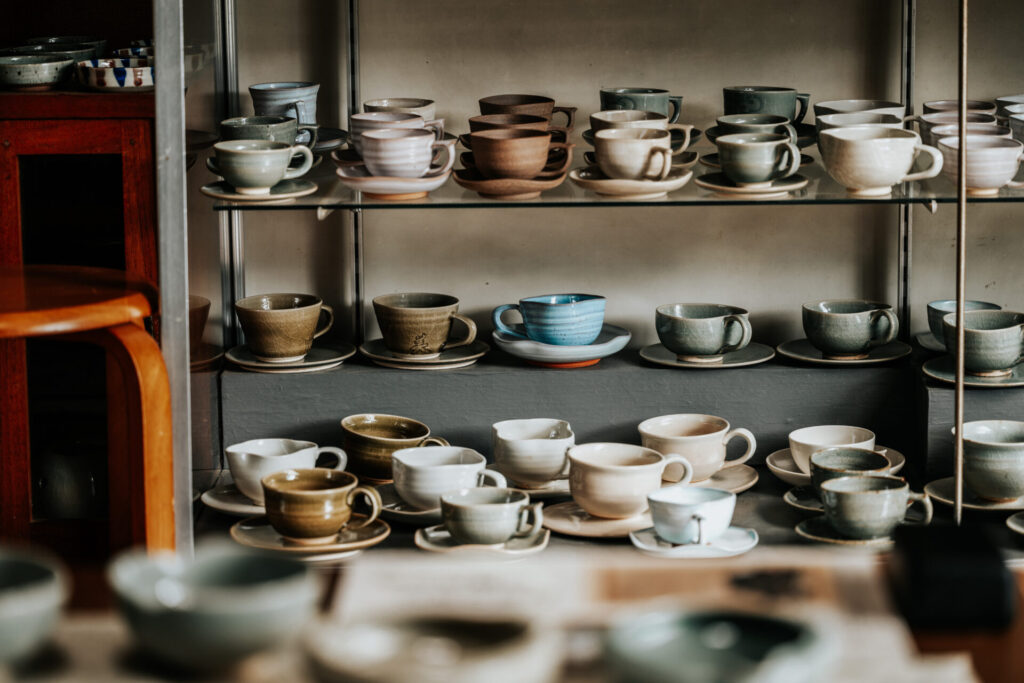
“All the kilns are located in narrow alleys branching from Setomachi Street, which retains a retro Showa-era atmosphere. Some produce pottery, others porcelain. Some highlight the natural color of the clay, while others use glazes and vibrant hues to express unique aesthetics. Each kiln has its own singular personality—that’s the real charm of Aizu-Hongo ware.”
Matsuda explains that in the past, the lack of standardization in materials or methods was seen as a weakness. Now, that very diversity is celebrated as part of the ware’s identity.
Interestingly, anyone who sets up a kiln and produces pottery in this area is permitted to call it Aizu-Hongo ware. This openness, while at odds with the area’s reputed insularity, reflects the Aizu people’s generosity of spirit.
Yet as Matsuda grew more involved, he saw areas for improvement.
“When I visited other pottery towns, I found not just kilns, but cafés, restaurants, and rest spots—places even non-enthusiasts could enjoy for a full day. In contrast, Aizu-Hongo has a convenient concentration of kilns, but few other attractions. We need to broaden our perspective and create experiences that make the entire town enjoyable.”
One such initiative is “COBACO,” a café and community hub Matsuda established by renovating a vacant storefront. It now serves as a rest stop for visitors, offers local goods for sale, and provides a space for events and workshops.
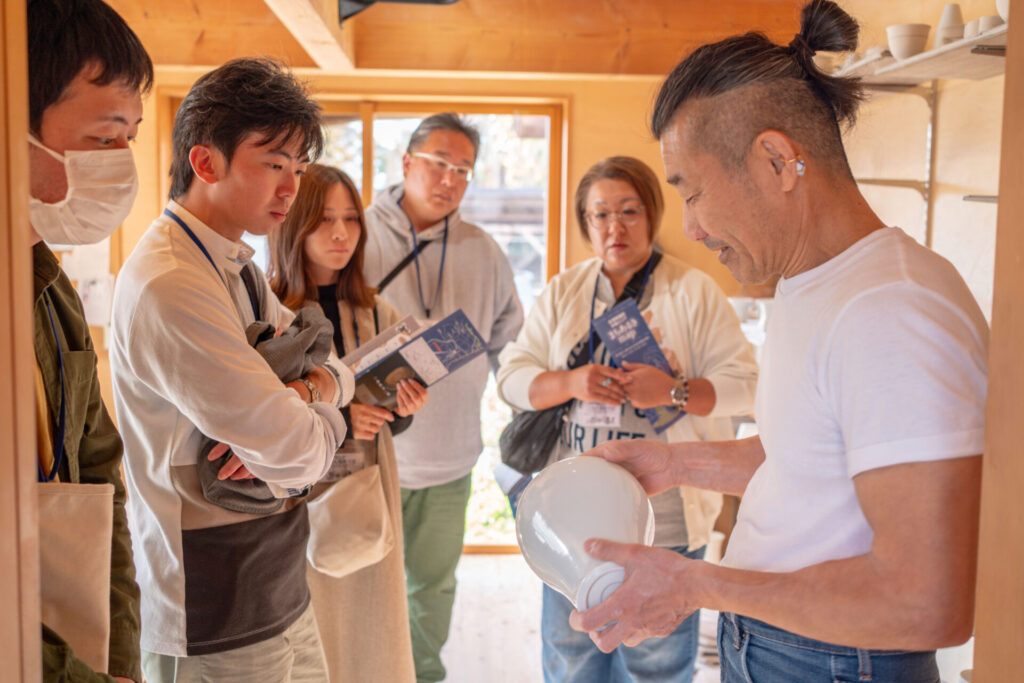
Sharing the Craft: The Living Art of the Artisan
“To better convey the appeal of the artisans who dedicate themselves to their craft each day, we’ve started offering more in-depth kiln tours.”
These guided tours allow visitors to witness the pottery process up close and engage directly with the artisans.
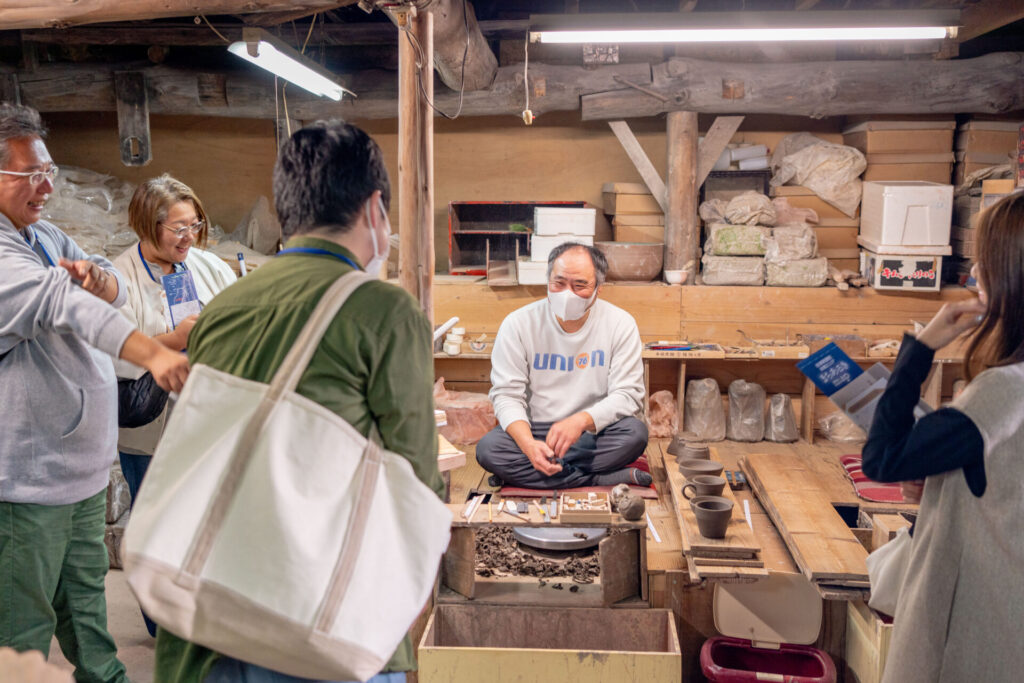
“As someone with no pottery background, I find the artisans’ work fascinating. Their everyday actions are like nothing the average person can imagine. Just making a teapot, for example, involves spinning the wheel, assembling parts—it’s a true showcase of skill. That’s why we want people to observe them at work. It’s like the ‘behavioral exhibits’ at Asahiyama Zoo—watching animals in their natural behavior. We want visitors to watch, listen, and feel the living art of craftsmanship.”
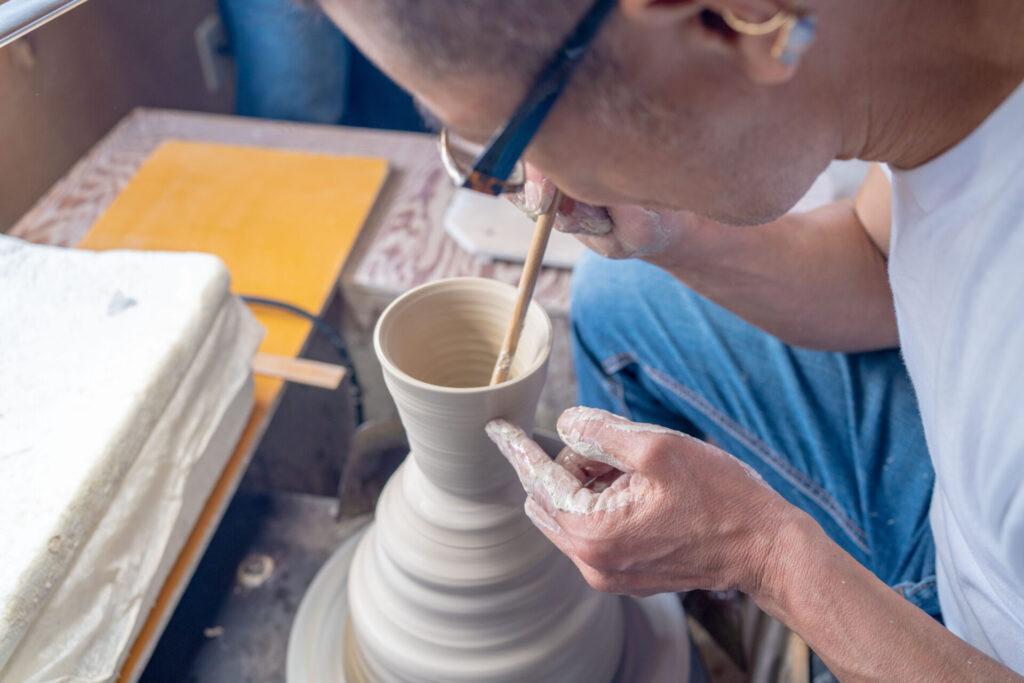
To facilitate communication between artisans and visitors, Matsuda acts as a bridge.
“Many people in Aizu are naturally reserved, and that’s even more true of artisans. Some hardly speak, which can be challenging. So when I guide tours, I make an effort to ask specific questions about the techniques and processes. That gradually encourages the artisans to open up, and the visitors begin to join the conversation.”
The goal is to help visitors understand the personalities behind the craftsmanship to truly feel the charm of the artisans themselves. Matsuda hopes this interaction will turn casual visitors into lifelong fans of the artisans. He is currently working on a new experience that focuses more on personal interaction between artisans and tourists.
“We’re planning a year-long pottery program. Participants would regularly visit a kiln, work with an artisan, and go through the entire process—from kneading the clay to shaping, drying, glazing, and firing. The final step would be loading the kiln and spending the night watching it fire while sharing drinks with the artisans. I believe that spending so much time on a piece will make it deeply meaningful, and the connection with the artisan will become a lifelong treasure.”
What Should Be Passed On to the Future?
When asked what he most wants to carry into the future, Matsuda answers:
“To continue Aizu-Hongo ware for the next 100 years, with the artisans and community all working together.”
“I want people to visit Aizu-Hongo freely and casually. Just walking through the old town, you can feel the weight of centuries of tradition. And by meeting the artisans and locals, I hope visitors will experience the warmth of life here. That could lead to a lasting attachment, and they might want to come back again and again. I want people to fall in love—not just with the pottery, but with the town and the people who support it.”
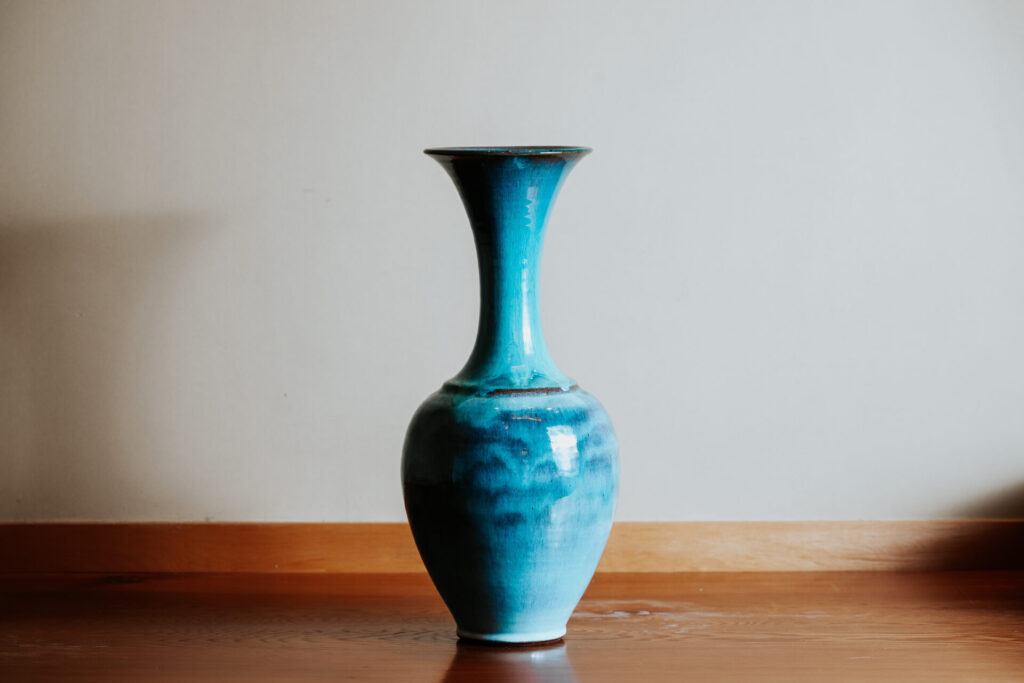
Aizu-Hongo ware is beloved by locals, and it’s often said that “everyone has a favorite kiln.” This deep-rooted affection, passed down through generations, is what makes it resonate so strongly with visitors.
Matsuda emphasizes that nurturing successors is vital for the survival of Aizu-Hongo ware. That means involving not only local residents but also passionate fans who support the artisans. It’s only through these human connections that future potters will emerge—and the tradition can continue to evolve.
“I do this work simply because I love it. Honestly, it’s just self-satisfaction,” Matsuda says with a modest smile.
Yet his quiet passion is undeniably breathing new life into this historic pottery town. Without a doubt, he is also one of the key figures guiding Aizu-Hongo ware into the future.
